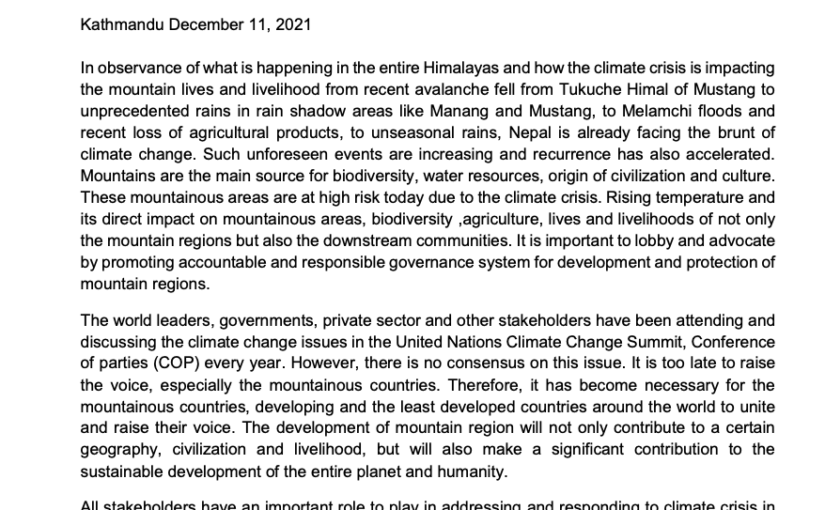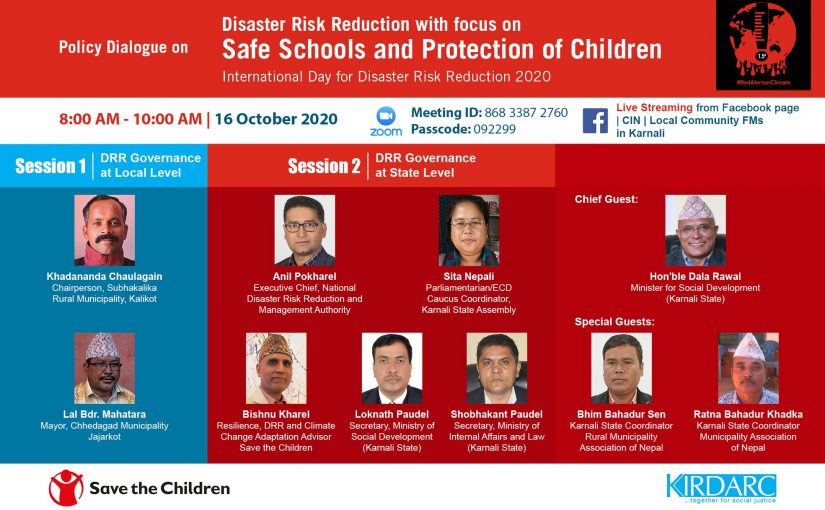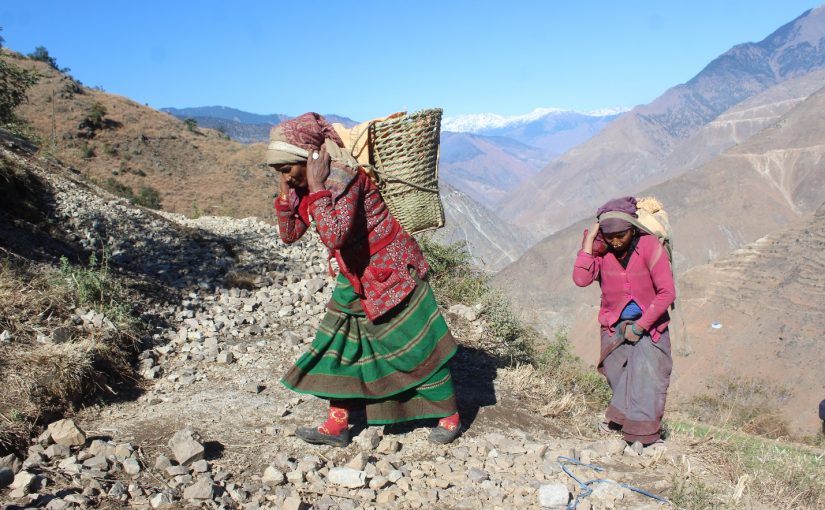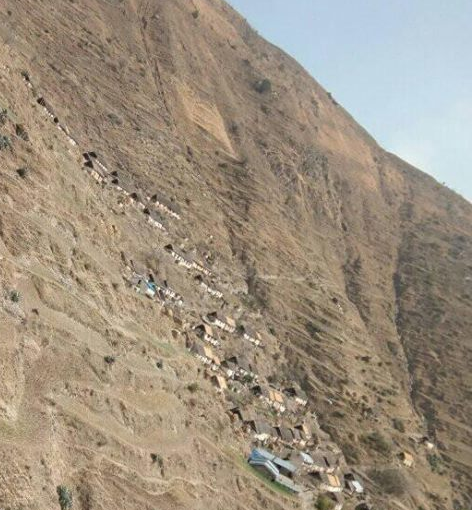The world is marking December 11 as International Mountain Day after the United Nations General Assembly designated the day for the evelopment of mountains and high lands across the globe. Marking the day in Nepal, a home to eight Himalayas out of 14 mountains above 8000 meters in the world together with other highlands has a great significance at a time when melting mountains are seizing headlines across the world.
We are marking this special day while the United Nations Framework for Convention on Climate Change (UNFCCC) Conference of Parties (COP-21) is underway in Paris since December 1. With the snow-capped mountains continue to melting, people residing around this high lands are facing adverse impacts in their livelihood. We are already seeing the effects of extreme weather, snowstorms, avalanches on the Mt. Everest and blizzards in famous Annapurna Trekking circle, a mountainous country needs to raise voice about the consequences of climate change to protect and promote the rights of mountain communities in Nepal.
According to International Centre for Integrated Mountain Development (ICIMOD), mountains cover around 25% of the earth’s land surface and host
about 13% of the world population and are perennial providers of essential ecosystem goods and services to billions of people living in the mountains and downstream. Mountain region is rich in timber, medicinal and aromatic herbs, and it could have generated substantial incomes to the local people. Those resources, however, continue to remain underused or untapped for centuries due to the lack of development infrastructures, and governments’ sheer negligence.









0 Comments